Two years ago I asked Sergio Menchaca, of Texas Sage Forge, to make me an eight-inch chef’s knife. For the blade’s raw material, I sent him the mid-century steel hoof testers that my father, who is now 96, used during his decades as an equine veterinarian and on our mule ranch. The finished product, which features a handle carved from a piece of mottled Texas oak, is now one of my most prized possessions.
At the time, Menchaca was a high school principal in the small North Texas town of Bowie (named after Jim Bowie, of bowie knife fame). But at night, in his workshop, Menchaca created custom full-tang culinary knives out of antique high-carbon steel, fashioning the handles from items including antlers and bone, foraged native cactus and wood, and nineteenth-century wagon wheels.
Most knives on the market are made from stainless steel. The spines of those blades average a quarter-inch thick, but he hones his to a fine edge of just less than a tenth of an inch. It’s a remarkable feat considering that he uses old steel from vintage hay rakes, plow discs, railroad springs, and saw blades.
Most makers steer clear of reclaimed metal because “they don’t know what alloys it’s comprised of,” says Menchaca. He tests each piece by heating and forging it to see whether it can be hardened into a thin blade.
Knives have fascinated Menchaca since his childhood in the Hill Country town of Junction, where he hunted, fished, and learned from his mother to cook dishes such as fried venison and gravy. His initial forays into knife making—using prefabricated bars of high-carbon steel—were simply a way to unwind. When his friend Chris Arguello, of San Antonio’s Bexar Metal Creations (see “Other Artisans Who Make the Cut“), taught him how to forge, Menchaca became obsessed with making blades from raw materials and using fire to finesse his slicers, chef’s knives, and Japanese nakiri, honesuki, and santoku blades. He founded Texas Sage Forge in 2015 and began creating pieces for customers such as pitmaster Mark Scott, of the Convenience West barbecue joint, in Marfa. (I learned of Menchaca when Scott posted an Instagram photo of his new meat cleaver made from reclaimed steel and prickly pear fiber.)
“Other than the colored epoxy resin some people want mixed into their handles, one hundred percent of the materials I use in the blades and handles are from Texas,” says Menchaca, who now lives in Bovina, near the New Mexico border, where he’s superintendent of schools. “A lot of chefs source ingredients from local farms and makers so they can tell a story with their food. Why can’t we do that with knives?”
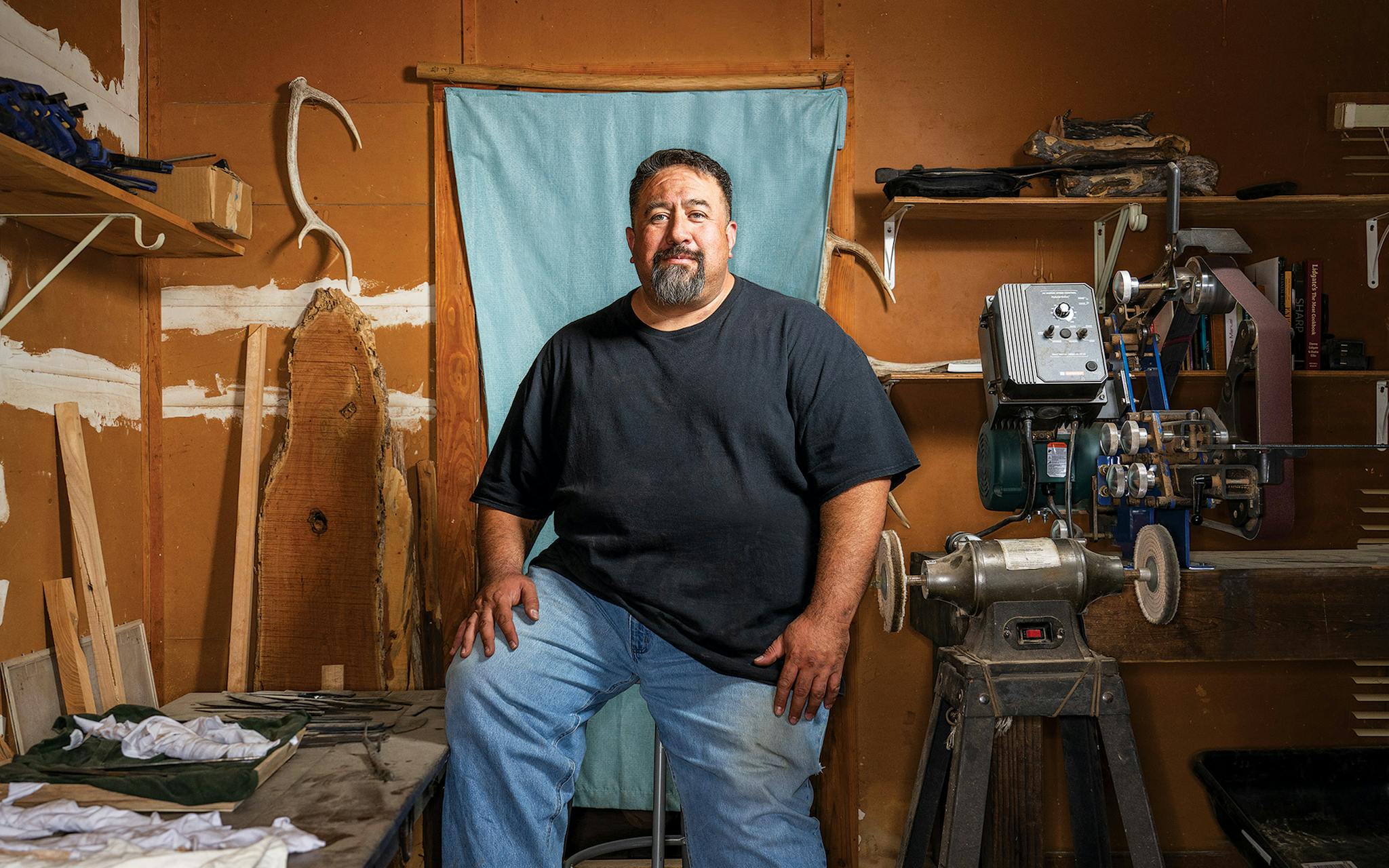
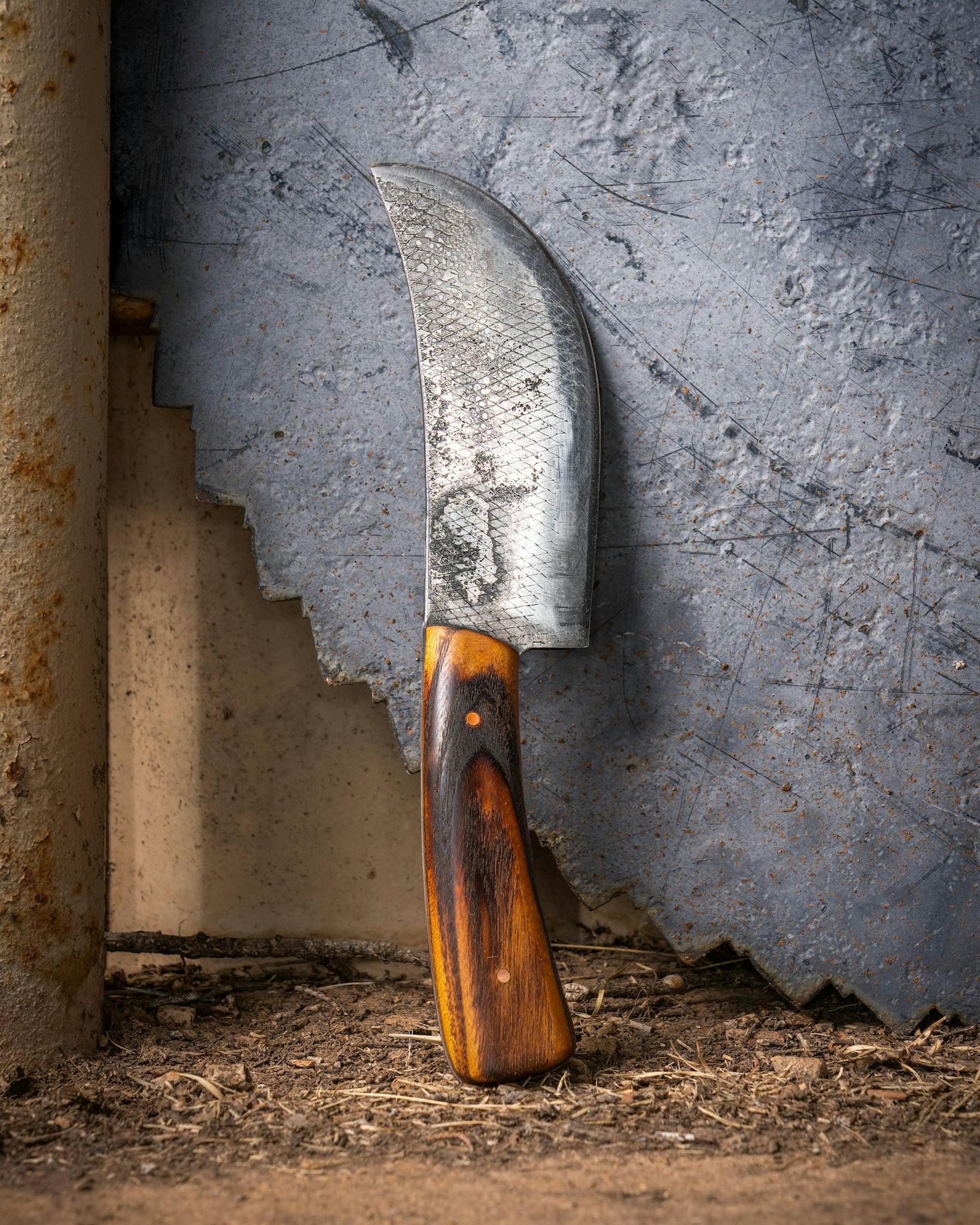
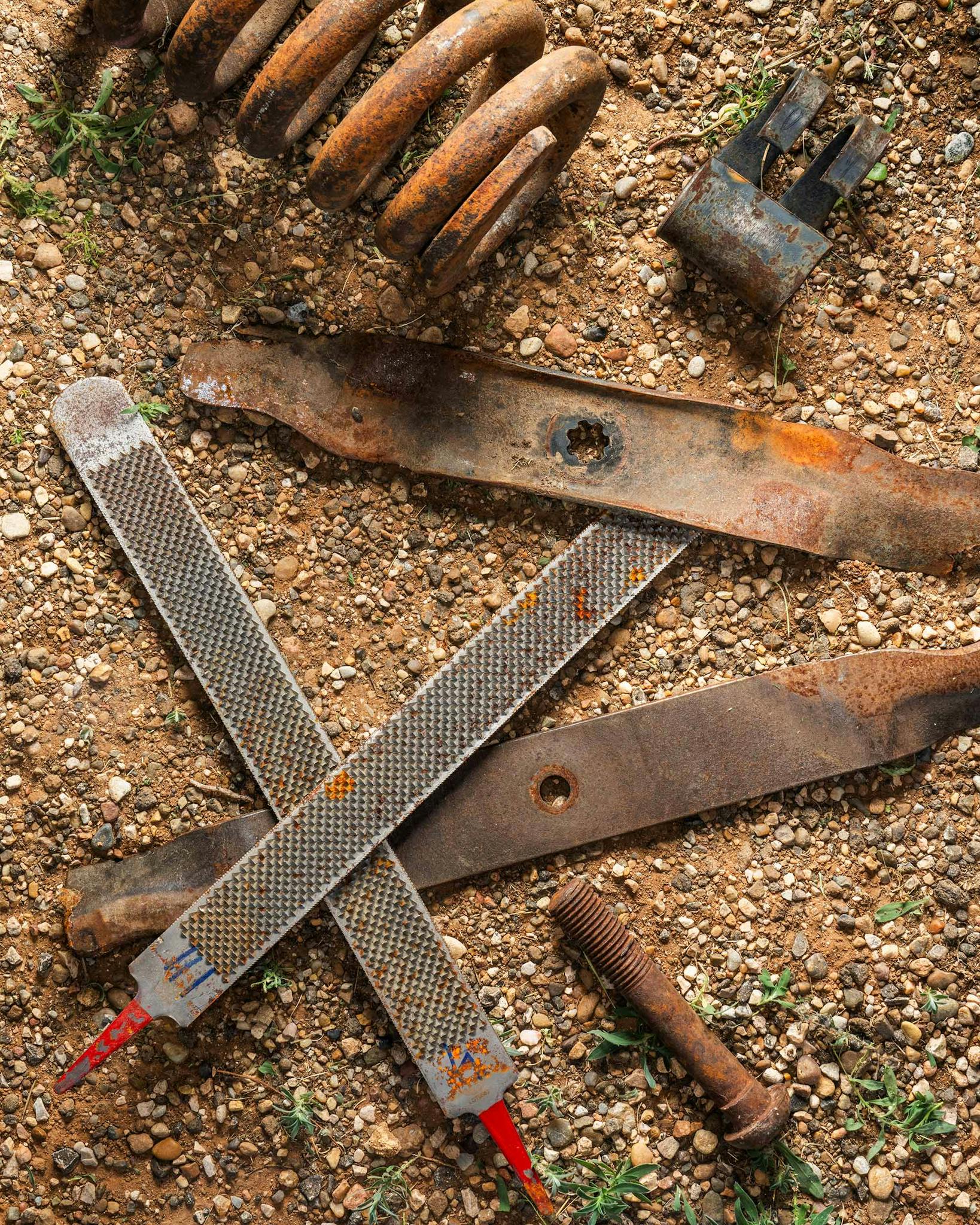
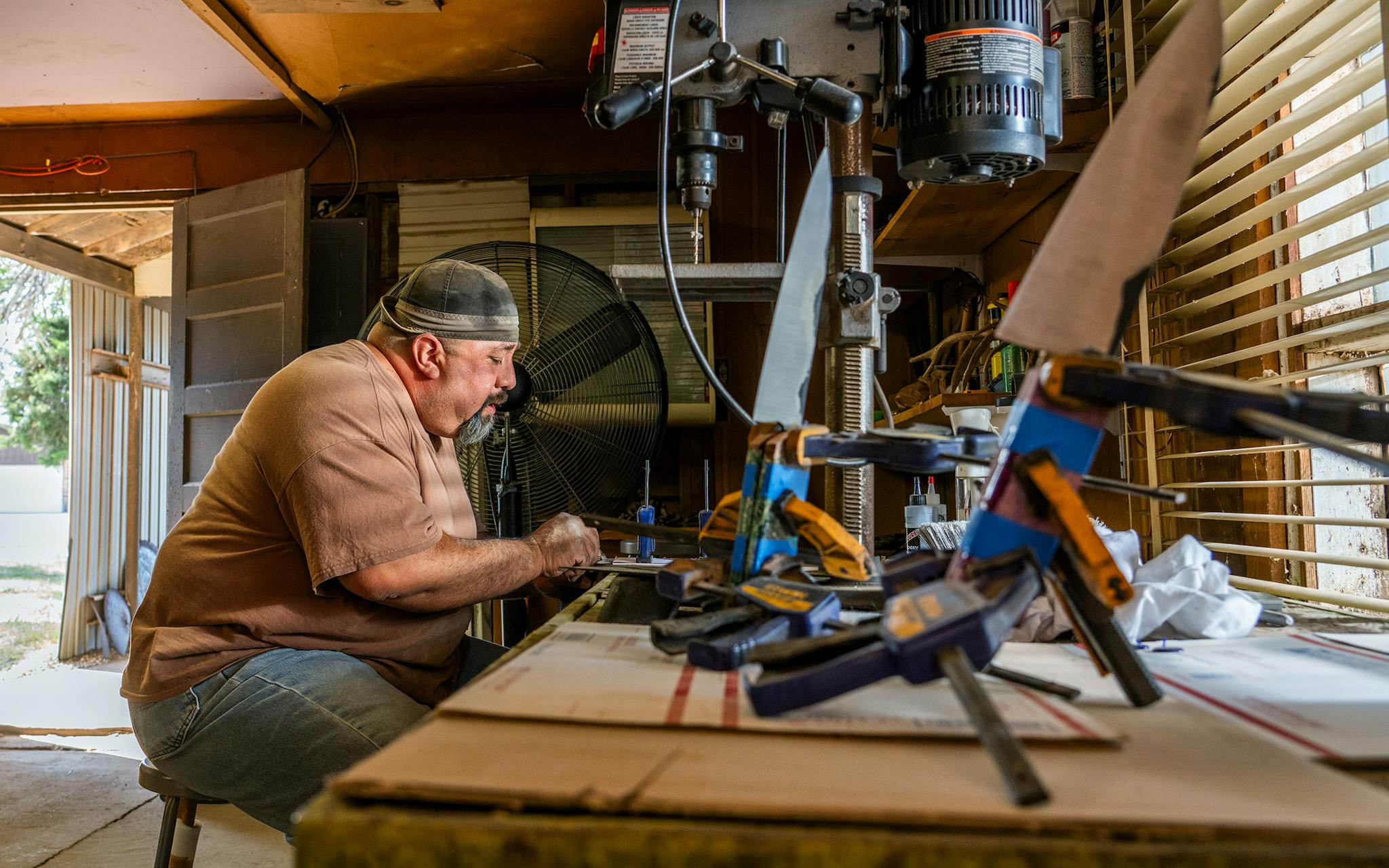
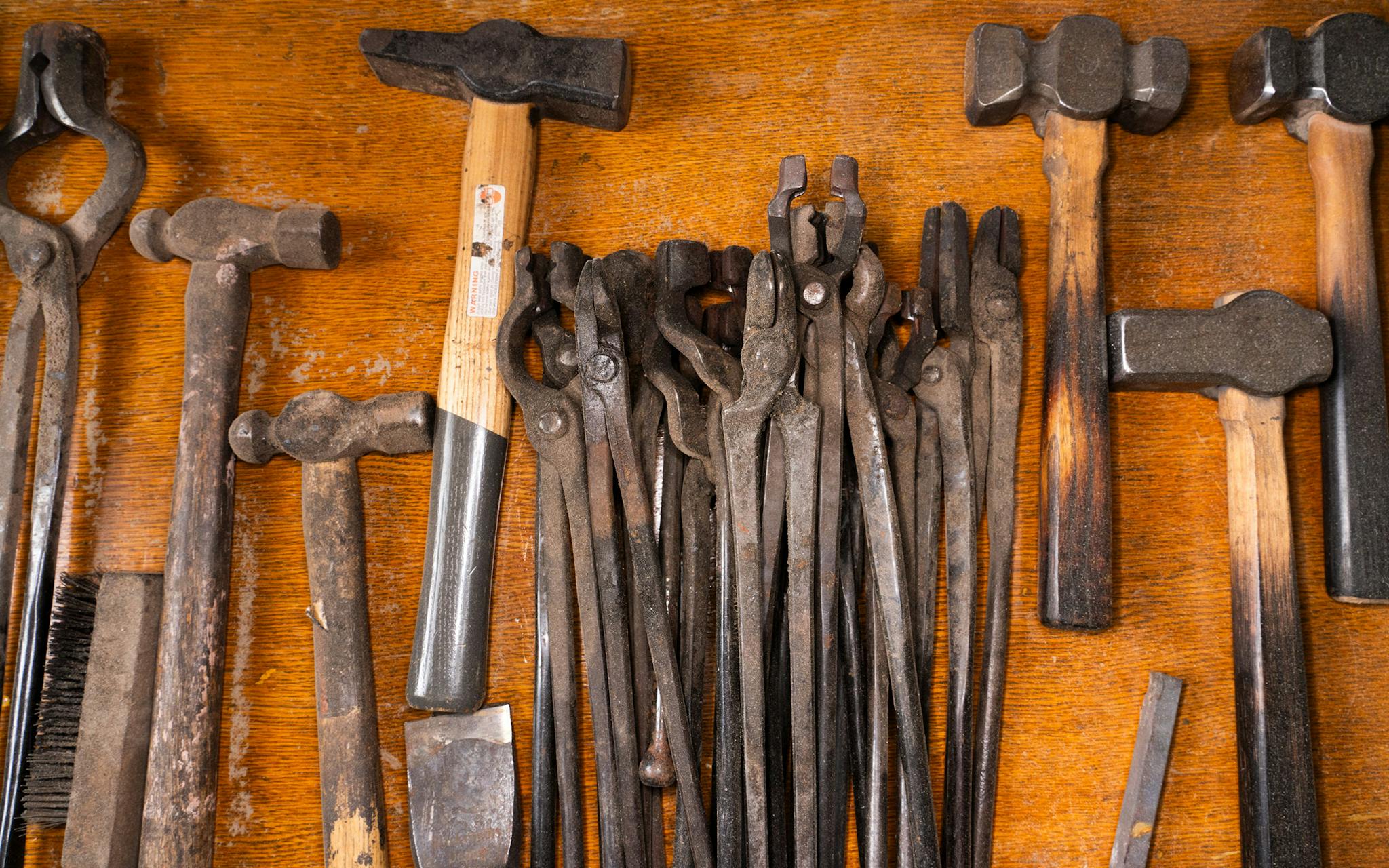


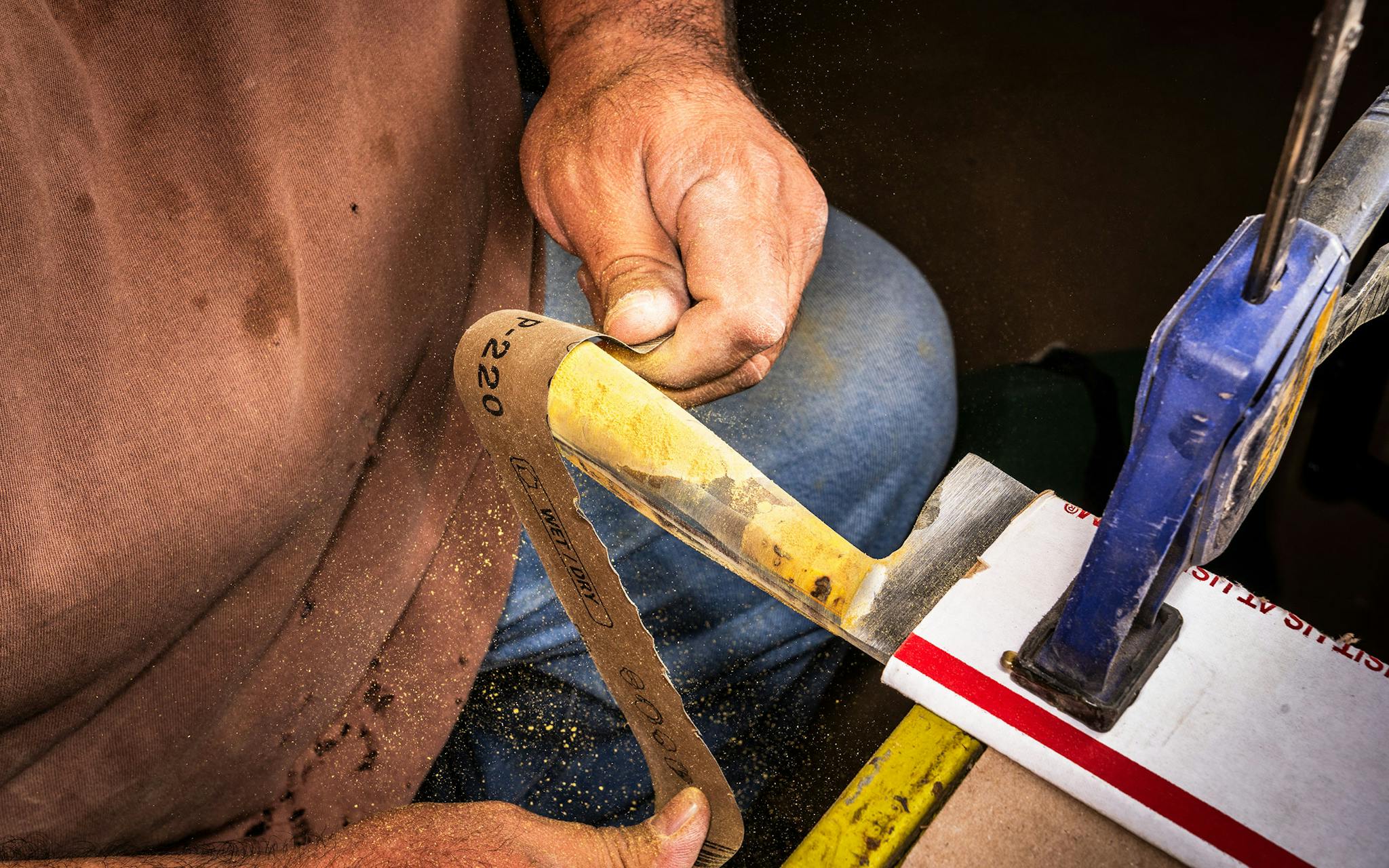

Other Artisans Who Make the Cut
Kabisch Custom Knives
Henrietta
Ben Kabisch creates case-style, custom pocket knives ranging from two and a half inches to five inches. “My granddad always had Case, Camillus, or Old Timer knives on him when I was a kid, so I had them too,” Kabisch says. “It’s really a nostalgia thing for me.” His knives feature handles made from antler, bone, composite materials, mammoth ivory, or stabilized wood. His most unusual request? A cast resin handle made from the ashes of a customer’s late father.
JB Knife & Tool
Gonzales
Inspired by their love of the outdoors and their training in Filipino martial arts, owners Brian Moreland and John Stubbs have created a line of stock-removal (as opposed to forged) high-carbon steel bushcraft, hunting, and tactical knives. Of note is the ultralight Ditch line. “They’re durable, comfortable, everyday blades strong enough to be used for work knives if needed,” says Moreland.
Bexar Metal Creations
San Antonio
Chris Arguello launched his company a decade ago, after his wife asked him to make a letter opener. The self-taught cutler forges stunning custom stainless culinary and hunting blades with handles made from Texas-sourced antler, bone, steel, and wood. Arguello is also known for his intricately patterned Damascus blades and other metalwork, including meat smokers and art pieces.
This article originally appeared in the October 2023 issue of Texas Monthly with the headline “The Cutting Edge of Heirloom Knives.” Subscribe today.







